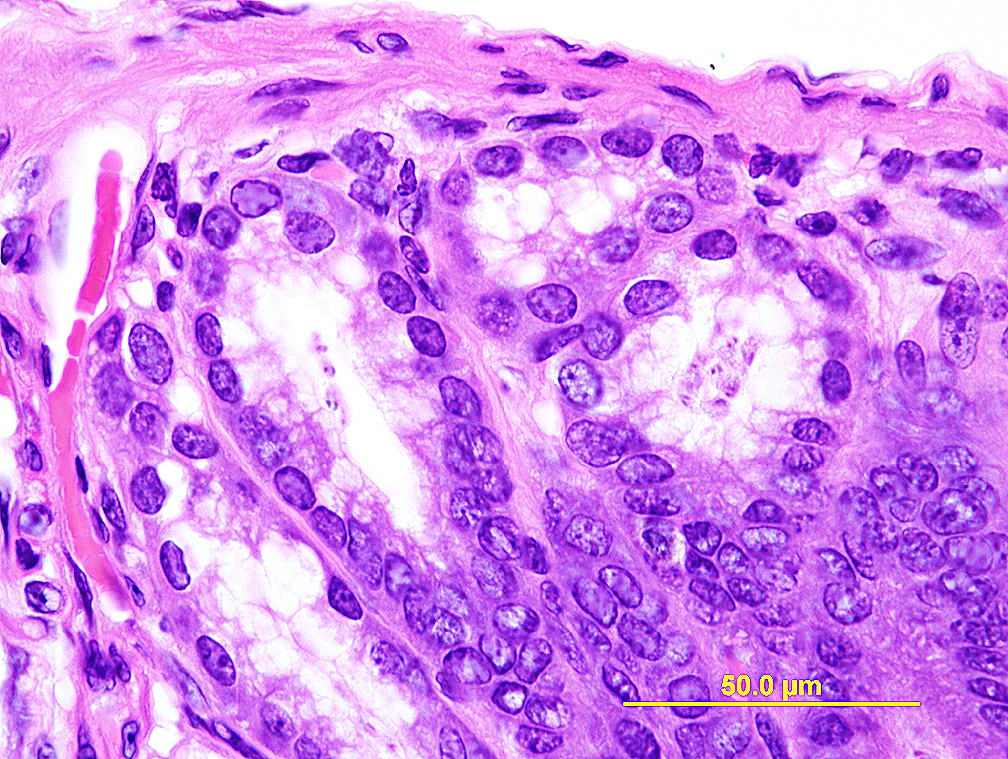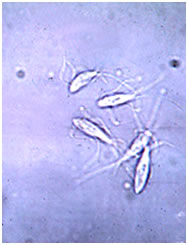
Etiology: Spironucleus muris is a flagellated protozoan.
Incidence: The incidence of infection is uncommon in research settings.
Transmission: Ingestion of infective cysts passed in fecal material is the primary mode of transmission.
Distribution: Spironucleus muris is found primarily in the crypts of the duodenum and pyloric glands. In young animals, luminal protozoa are more numerous.
Clinical Signs: Clinical signs are not usually observed.
Diagnosis: PCR of the feces can be used however, cysts are shed intermittently. Direct smears of small intestinal contents reveal fast darting protozoa. Spironucleus can also be diagnosed by histopathologic examination of pyloric/duodenal area.

Diagnostic Morphology: Trophozoite: 7- 9 x 2- 3 µm, piriform (teardrop)-shaped or carrot-shaped, with 6 anterior flagella, 2 posterior flagella, 2 anterior nuclei and 2 separate axostyles.